The heart of Umbrian wine country reveals a rising star: Sagrantino
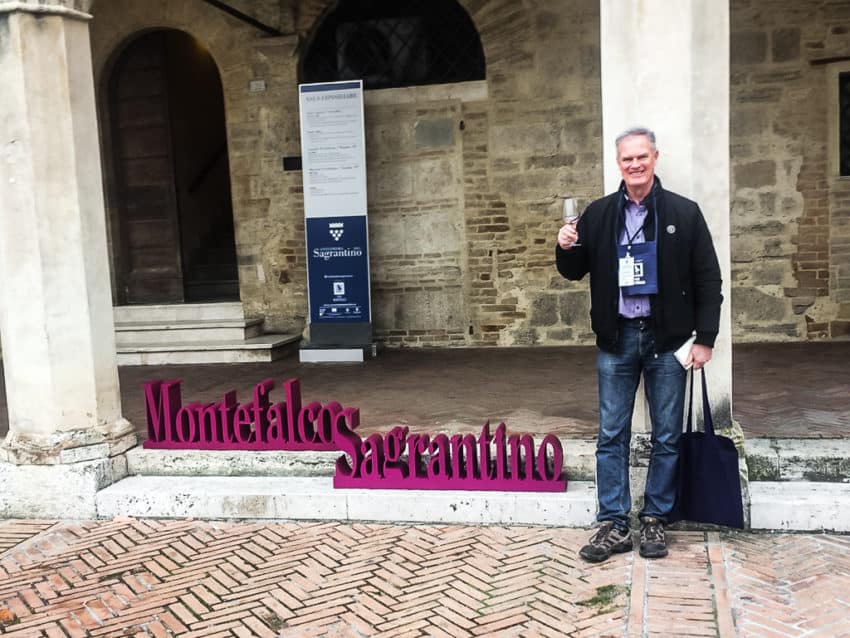
MONTEFALCO, Italy — One of my pleasant surprises after retiring to Rome with a taste for wine and no car is I never have to leave the city to taste the best wines in the world. I never even have to visit a restaurant or wine bar. All I have to do is wait for the wine tastings that come to Rome nearly every weekend. Piedmont. Puglia. Bio wines. Chianti. Nearly every theme under the massive Italian wine umbrella makes its way to Rome where I can drink my way through an entire region without ever leaving a conference room.
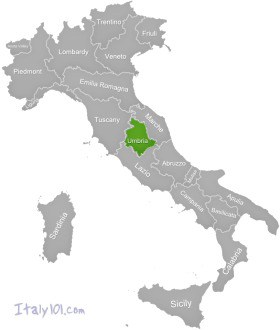
However, I must admit these wine tastings, called degustazioni in Italian, miss a lot of local flavor. You can hold them in the most beautiful hotels in Rome, such as the Radisson Blu, but you only get, literally, a taste. You don’t get the feel. You don’t see the vineyards shining in the sun. You don’t smell the French Oak in the storage rooms. You don’t see the sprawling winery setting in the rolling hills. Degustazioni make you feel like you’re in Rome.
Wineries make you feel like you’re in Italy. Old Italy. Where grapevines hang over picnic tables and entire villages revolve around the wine production calendar. Sometimes you have to get closer to the wine to truly taste it.
For some reason, however great Italian wine is, it tastes even better where it’s made.
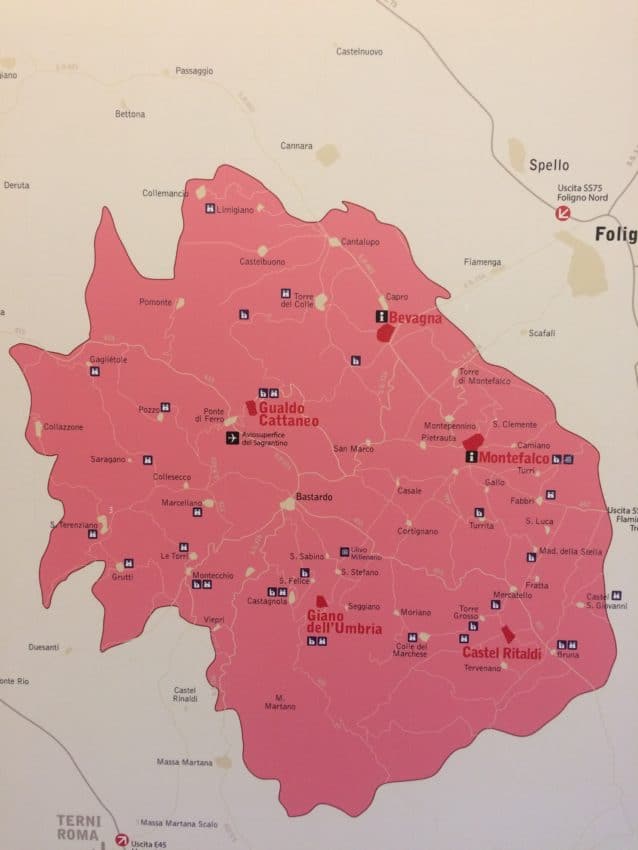
After five years in Rome, I finally had that opportunity last week. My good friend, Alessandro Castellani, a sportswriter for the ANSA wire service and Italian food and wine connoisseur, got an invitation to attend the Anteprima Sagrantino. It’s a fair featuring the rare, delicious and little-known Umbrian wine called Sagrantino. It’s held in Montefalco, a town of about 5,800 in the heart of Umbria and the center of Sagrantino production.
It sounded like a great time: two days drinking one of the most underrated wines in the world, stay overnight in a beautiful hotel that has hosted movie stars, eat Umbria’s great local cheeses and meats and visit a couple wineries in the quiet off season.
I decided to tag along.
This was not only two days of drinking wine. It was two days of drinking wine in Umbria, which is rapidly becoming my favorite wine region in Italy. That’s a little like being the prettiest woman in Italy, too. The competition is fierce.
Alessandro picked me up near his home in northwest Rome and drove the 90 miles north to Montefalco. Driving anywhere with Alessandro is like getting a loud lesson in Romanaccio, the Roman dialect devoted entirely to profanity. Every car is driving too slow; every truck is driving in the wrong lane. Then again, he was in a hurry. To wine lovers, Anteprima Sagrantino is like a toppled milk truck near stray cats.
I’ve often called Umbria “Tuscany Light.” It has everything Tuscany has — walled towns, mountains, vineyards — at cheaper costs and a fraction of the tourists of its northern neighbor. It’s the only region that does not border a sea or another country. Thus, it has fewer outside influences. It has remained true to itself and to the relatively fewer outsiders lucky enough to discover it.

I love driving into Umbria, on uncrowded roads, through rolling hills, past walled villages perched high on cliffs like magic kingdoms. Deeper in the heart of Umbria, I pass vineyards, olive orchards and deep, green meadows. It’s now winter. It’s cold, in the low 40s. The vines are bare. But no matter.
You don’t have to drink wine outside under grapevines.
I tell people that to reach Montefalco, you go to Bastardo and take a right. True. Umbria has a town called Bastardo, named for the Osteria del Bastardo (Bastard’s Inn) around which the town was built in the 17th century. Montefalco has a much more romantic origin. Falcons were known to fly majestically around the foothills of the nearby Apennines mountain range.
Montefalco’s old town sits inside a 12th century wall. This once star-crossed village existed peacefully under the rule of the Papal States for 400 years before the unification of Italy in 1861. We stopped just outside the wall at Villa Pambuffetti, a four-star palace set in the middle of 10,000 square yards of gardens and century-old trees. The lobby looks like an Italian grandmother’s living room with overstuffed chairs and couches and a fireplace to warm your hands. A big jar of sugared jellies and chocolates share a coffee table with the daily papers. Tony Curtis once stayed here.

But the real star of Montefalco is Sagrantino. If you’ve never heard of it, let alone tried it, don’t feel bad. Like Umbria, it’s little known and underrated. The big reason is the Sagrantino grape is only grown in Umbria. Thus, Umbria, off the beaten path, is the only place that makes the wine. It’s an Umbrian tradition for a new grandfather to buy 12 bottles of a vintage and save it for 25 years until the grandchild marries.

While the grape has been around since the 16th century, Sagrantino wine is relatively new. It was mostly used to make the sweet Passito wine used during mass in Catholic churches. Being a close proximity to Rome and its 900 churches, Montefalco did a thriving business. But in the 1970s, technology improved and the Sagrantino, made from 100 percent Sagrantino grapes, received the official DOC denomination in 1979 and the higher-rated DOCG in 1992. Sharing center stage here is Montefalco Rosso, using a blend with Sagrantino, Sangiovese and another grape such as Colorino.
Expansion worked. Today, 63 wineries dot the wine map around Montefalco. Most are exporting, some as much as 40 percent and to as far away as China and Japan.
I had only a passing knowledge of it. Meanwhile, Alessandro, who had lauded this festival for weeks, was panting like a thirsty dog.
We entered through the walled city’s huge arched door and up the narrow cobblestone street to a nearly hidden hallway holding a large conference room. Here was my familiar territory: a square room with 40 wineries sitting table to table all offering four or five of their best wines.
Sagrantino is a hard grape to grow. It needs a long, hot season and has one of the highest tannin levels. It’s twice the level of Nebbiolo, the base for my favorite Barolo wine, and Cabernet Sauvignon. It makes Sagrantino a much drier red wine. Look at the wine and it is a deep purple, with an almost black center. It just so happens purple is my favorite color.
Thus, Sagrantino is absolutely beautiful to behold — particularly in a glass, even at 11 a.m. when we started drinking.
I became a huge Sagrantino fan before lunch. Among the metropolis of Montefalco wineries, Arnaldo-Caprai is one of the best known. At wine tastings, I always start by asking for their medium wine. Not the best, not the worst. Alessandra Nobili of Arnaldo-Caprai started me with a 2015 Collepiano and it was very good, rich and full with the taste of plum and cinnamon I’d read about.
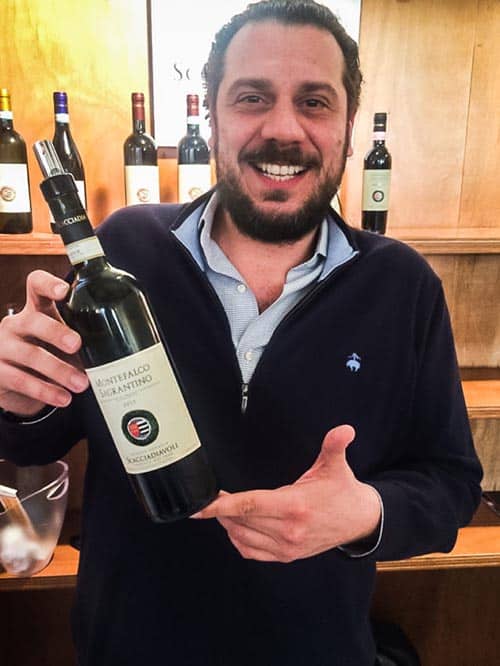
Then she graduated me up to a Sagrantino celebrating the winery’s 25-year anniversary last year. Simply called 25 Year, it was one of the best red wines I’ve ever had. No wonder. It’s 50 euros in Italy, and about $150 in the U.S. where Arnaldo-Caprai has a base in New York.
Another big winery here is Scacciadiavoli. It sells in 14 states in the U.S., plus Europe, United Kingdom and Japan. Iacopo Pambuffetti, a cousin of the hotel owners, is a big, jovial bearded member of the winery’s founding family. He speaks of Sagrantino as if it’s a family member, too.
“I love Sagrantino because it represents very, very well my region,” he said. “And it’s an incredible wine. If you want, you can put it among the top wines in Italy.”

He then talked about how well it goes with wild boar and lamb, goat cheese and dark chocolate. I hadn’t eaten since a cornetto on the ride up. My taste buds were hyperventilating. We were in Italy.
In Italy, wine tasting is foreplay.
Alessandro and I went to Olevm (the Latin word for “oil”), a small home-style restaurant with olive print tablecloths and a big chest of drawers holding olive and wine in the middle of the upstairs dining room. Black and white photos of Italian movie legends such as Alberto Sordi and Sophia Loren eating pasta hang on the walls.
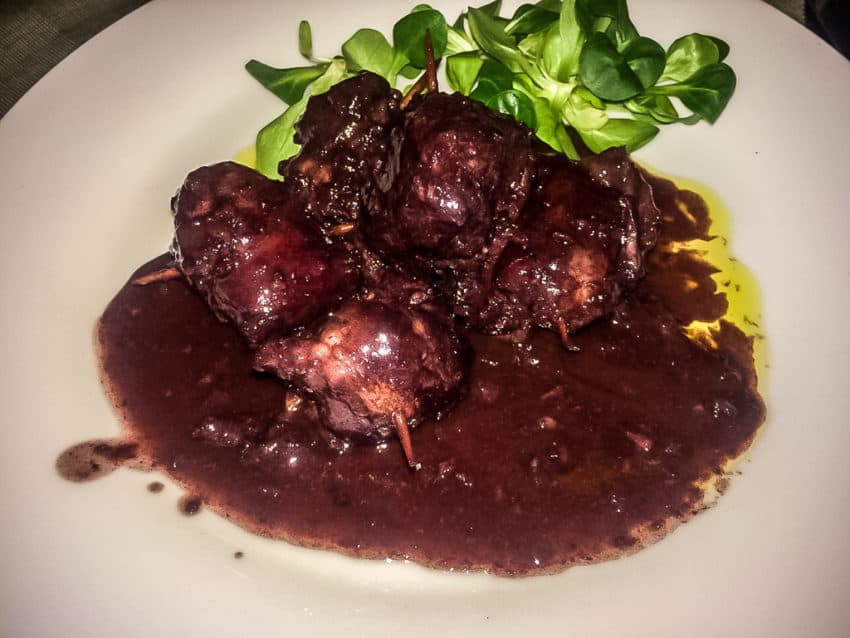
We had bruschetta with olive, zucchini and potato spreads then I had pasta with greens followed by chicken in Sagrantino sauce (I’m wondering if they use Sagrantino to run their cars, too.). It’s the first time I’ve ever had purple chicken but the unique combination is something that should be exported as well.
Placated with carbs, we entered Anteprima Sagrantino’s war room: the media tasting room. Converted from the Montefalco city council chamber, it sported five long tables with nine seats each, all with six glasses, breadsticks and a spit bucket.
The place was empty.
We took our seats and the young server gave us a list of 45 wineries we could taste. Oddly, we had to try a minimum of six. Who was I to argue? We tried (gulp!) 10: six 100 percent Sagrantino and four Passito.
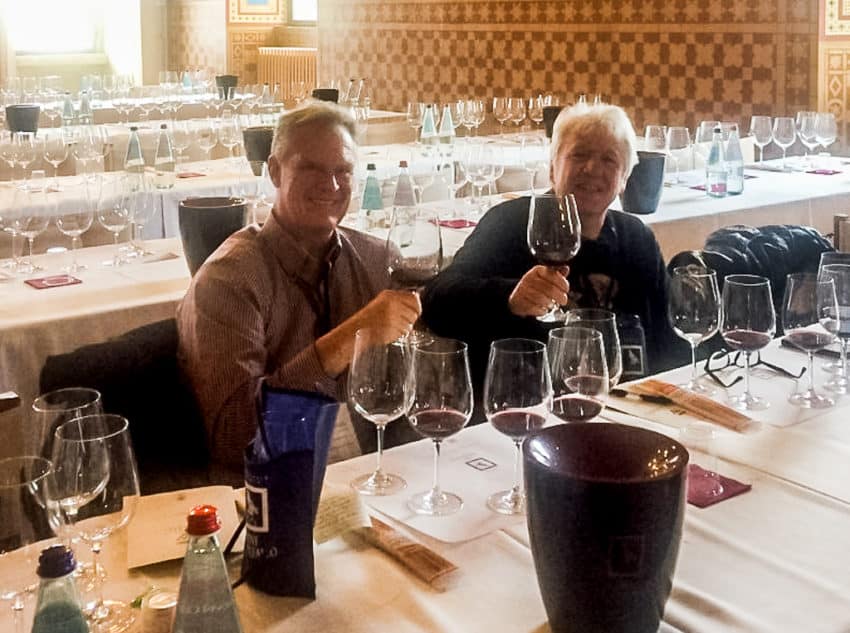
I am not a wine connoisseur. When I taste a wine I rarely can separate the cherries from the tobacco, the plums from the raspberries. Most who say they can are full of fertilizer. They’re trying to impress their date or the sommelier server, most of whom try hard not to roll their eyes. I am not a wine snob. I can tell a red from a white and that’s about it.
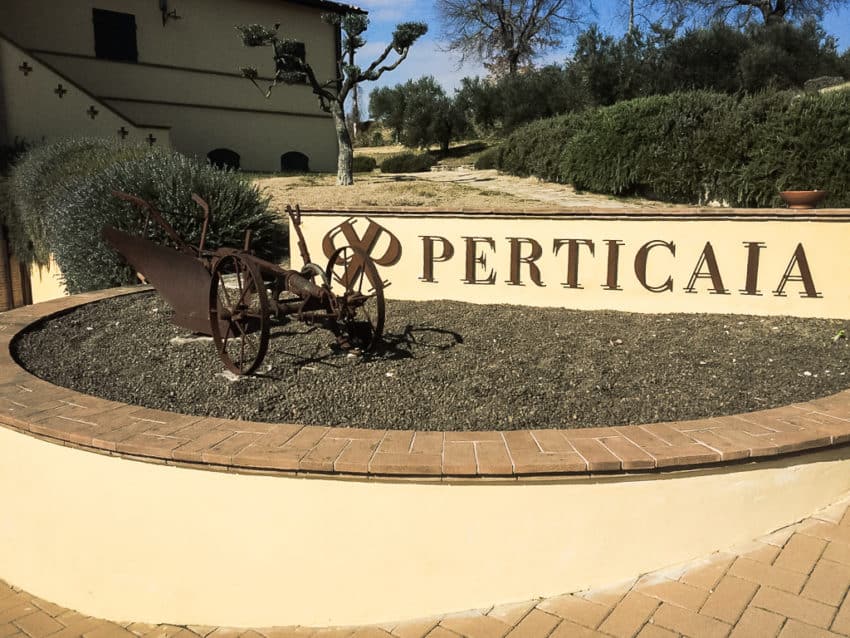
But I know what I like and the best of the bunch was the Moretti Omero, rich, deep and the kind of flavor that lasts in your mouth long after you swallowed. Fruits? Christ, I don’t know. Who cares? I just knew I had to buy a bottle.
The highlight of Anteprima Sagrantino is the winery dinner. About 20 journalists, wine writers and freeloaders poured into cars and headed first to Scacciadiavoli for an aperitivo. Scacciadiavoli is the area’s oldest winery, established in 1884. It sits just east of Bastardo with 86 acres anchored by two large white buildings that look like simple churches. Downstairs in the tasting room where we mingled with Montefalco’s crem della grapes while munching on fried baccala’ (cod) and bread with anchovies, washed down with the winery’s sparkling wine.
We then piled back in the cars for a short drive to Le Cimate where we sat in a large modern dining room. Bordering the room were four large tables featuring cheeses, main dishes, wines and made-to-order desserts. It was gluttony paradise.
I sat next to Giulia Goretti who has traveled all over the world promoting her Vini Goretti family winery near Perugia, Umbria’s capital about 30 miles to the north, and two around Montefalco. This winery goes back four generations dating to the early 1900s. When she talked about Umbrian wine, I listened.
“It’s something more special now,” she said. “When you are proposing an Umbrian wine you are proposing something different, something that not many people know. A lot of times it’s more interesting than other regions that are more known.”
Between bites of nearly orgasmic tortellini in cheese topped with truffle shavings, I asked her how so many wines in such a small region can compete against each other. It’s like 30 gelaterias on one block in Rome.
“The world is very big,” she said. “We export a lot. And every Sagrantino is different.”
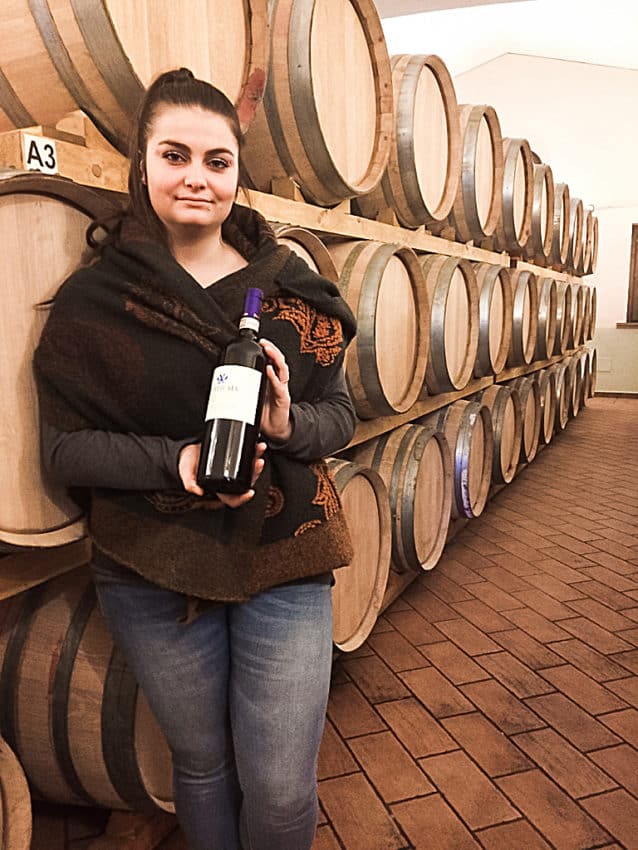
The next morning, Alessandro and I went to the outskirts of Montefalco to the small winery of Perticaia (meaning “plow” in the Umbrian dialect and marking the transition to agriculture). Started in just 2000, it’s a split-level mustard-colored building with 123 acres of vineyards and 200 olive trees. In winter, its vegetarian is bare, making the landscape almost ghostlike in the morning fog. But inside the warm, light-filled tasting room, we tried 10 — count ‘em, 10 — wines that belie the size of the winery. I especially liked the brand new 2018 Sagrantino and the 2012 Montefalco Rosso.
We left fat and happy (me a little more as Alessandro had to drive back to Rome) and couldn’t help noticing the smiles on all the faces of the wine people we met. This truly is a wonderful business, manufacturing something you love and can share with the world in a beautiful setting. The stress of economics, competition, weather and marketing doesn’t seem to faze these people. If wine is the key to a stress-free life, maybe I should increase my intake.
“We are always in front of a glass of wine,” Goretti told me. “We are always at a table with a lot of people, talking and drinking and laughing. How can you not be happy? That’s why it’s the best life ever.”


February 26, 2019 @ 10:12 am
You make me long to go back to Italy….last time I was there was October – November 2018 traveling by train and bus from Brescia to Rome visiting many “off the beaten path” hill top villages in between. Every time I leave, more of my heart stays in Italy. Thank you for helping me relive the cherished moments I have spent there.
I am also glad you don’t have a car. Many tourists don’t realize you can travel to most places using great local transportation. You don’t need a car to travel in a lot of countries…you need something more precious though: time!
April 3, 2019 @ 4:11 am
I really enjoyed this article as we stumbled across the Montefalco Wine festival by chance while touring round Umbria. We are hoping to go back and stay for a couple of days in September . Is there any information on when the Seotember 2019 festival will take place? Thank you.
April 3, 2019 @ 6:24 am
Thanks for the comment, Janet. I checked with the Montefalco wine website and they didn’t have any dates listed. Maybe they aren’t set yet. I’d try call or writing them directly.
June 23, 2020 @ 1:25 pm
John,
I thoroughly enjoyed your writing and what you shared from your awesome experiences, tastings and observations!
Bought my first Montefalco Sangratino via my brother who randomly discovered it in a wine shop in Portland, Maine.
Grazie mille! Ad plus vini!
Lance